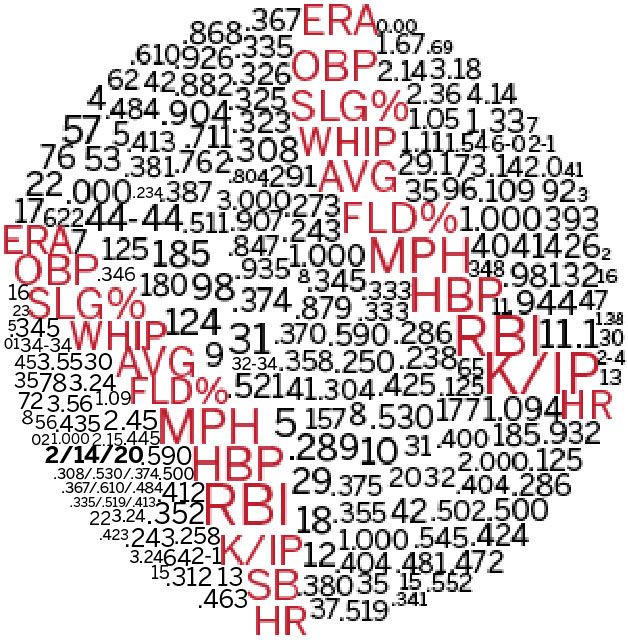By Braden Simmons | Reporter
The game of baseball is changing and Baylor’s baseball program has shifted its focus toward developing a way to provide information to gain an extra step in competition.
Director of baseball operations Justin Grassi and student manager Ryan Hebdon are passionate about the data side of the sport. They work behind the scenes to help analyze information that would benefit both the coaches and players.
Data analysis is used by almost every baseball team today and implements tools such as data visualization for a team to see the game from a whole new perspective. Hebdon, a graduate student in statistics, uses his passion for the game to look for different projects to help the players in any capacity.
“We are super fortunate to have student managers like Ryan in this new group we brought in to focus on data and analytics,” Grassi said. “[They] put out a product valued by the coaching staff and can be translated to the players.”
Modern equipment is key to gaining an edge on the field. Grassi said, Baylor uses multiple machines to help track data in pitching, hitting and more to analyze the way the team plays. The team is careful about implementing new software to ensure it is beneficial before using it. The goal is to use this software to translate to the on-field performance.
Hebdon said he has been a part of the team for four years and has seen growth in the analytics side as well as how the team views data. Ultimately, the team’s success relies on the players’ grit and determination to improve themselves, but he is glad the data is there for the players to access.
“My sophomore year, we had really no way to track data,” Hebdon said. “Now we have multiple instruments designed to track pitching and hitting that weren’t even in existence back then. Not only are the coaches interested in the increase in analytics, but some of the players are interested and will ask what their launch angle or exit velocity is in the cages.”
The metrics applied to the collegiate level are mainly implemented towards player development. Using coding software, such as ‘R’ and the “nerd stuff,” teams recruit highly talented players and continue looking for ways to make them better.
“We develop summary statistics through graphs or tables that will show trends of a player to display to them,” Hebdon said. “It is key for a player to see their weaknesses but also emphasize their strengths.”
Hebdon tracks the launch angles of players when the ball is hit off the bat, exit velocity or how hard the ball is hit and the spin rate of a pitcher as it leaves his arm toward the plate. With this information, the team generates an endless stream of data that allows for changes in the players’ development.
With so much data generated by the team, Hebdon said the difficult part about implementing a project is finding the information that will be most valuable. With a data set of 30 to 40 columns, it’s important to narrow down the variables that can be used to benefit the players.
“Coach [Steve] Rodriguez has done a great job in improving this program, and so we want to focus on improving the already talented players brought in,” Hebdon said. “If we keep the coaching strategy as the constant variable and improve the players, that will ultimately increase wins.”
Hebdon said he collaborates with multiple baseball student managers at other Division I programs. Among those are Iowa and Penn State University, where they generate different strategies to help their own teams. Everyone that works with a Division I program is trying to impact the game in order to find an edge against the competition.
“We don’t have enough developers in our organization to make the next baseball statistic that will change the game,” Hebdon said. “But we can look at certain statistics and numbers that are beneficial to scouting and recruiting a player.”
Hebdon intends on combining his love of statistics with his love of sports by creating a sports analytics club in the fall of 2020. In the meantime, he’ll be tracking players’ progress on the field as Baylor baseball prepares for its upcoming season.
The Bears host Nebraska in their season opener at 6:30 p.m. Feb. 14 at Baylor Ballpark.





